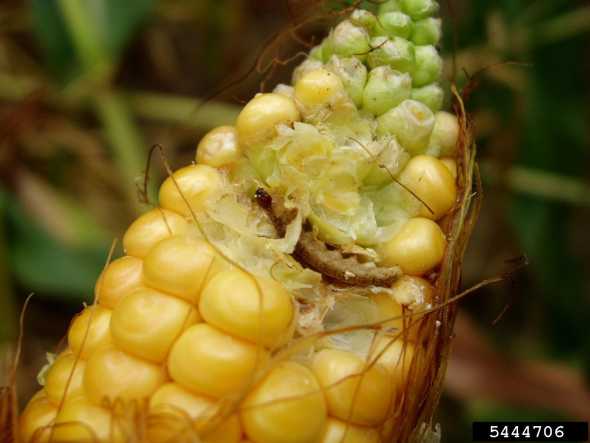How To Control Corn Earworm, European Corn Borer In Sweet Corn

Prior to tassel emergence, walk your fields a couple of times per week to look for feeding from European corn borer.
Photo credit: Jan Samanek, State Phytosanitary Administration (Czechia), Bugwood.org
In the Northeast, some of the “usual suspects” have been spotted in sweet corn, but with the cool weather in July and the beginning of August, the number of insect pests has been down — for now.
“They will be coming, so be prepared,” says Rick Foster, a professor in the Department of Entomology at Purdue University. To date, corn earworm has been the most serious problem on sweet corn, but he’s also received more reports of European corn borer damage than he has in several years.
The reason, he says, is there are some areas of Indiana and elsewhere where farmers are not growing large acreages of Bt (Bacillus thuringiensis) field corn with built-in pest resistance. Where the crops are more diversified, there is more opportunity for corn borers to survive and so the populations may be higher.
An IPM Plan
Foster says pyrethroids are the insecticides of choice for corn borer control and should be applied just before tassels emerge. For corn earworm, resistance to pyrethroids is an ongoing concern, so many growers have shifted to Coragen (DuPont) and Radiant (Dow AgroSciences), which he says have shown excellent control in trials for a number of years.
For Coragen, however, you are limited to three applications per season if using the high rate, Foster says. As most growers typically need four to six sprays when populations are high, they will have to rotate Coragen with another product. Radiant, on the other hand, can be applied six times in a season.
“If you are going with Coragen, you may have to supplement with Radiant, or another product, for one or more of the applications,” he explains.
New Varieties
Another part of a sound IPM program is to choose some of the new fresh market Bt varieties, he says. Although the older Bt varieties were effective, often a large number of very small earworms would be found in the tips of the ears.
During the last couple of years, Foster has tested some of the newer generations of the Bt sweet corn varieties from Syngenta and Seminis and they appear to be expressing the Bt toxin in a higher percentage in the kernels, resulting in good control of the pest.
How do these new varieties impact spray schedules? According to Foster, during much of the year, sprays can be reduced, but not eliminated. You can spread out your sprays, but should apply one early in the silking period (about 70% silks).
“This will help to control other pests that may feed on the silks, such as rootworm beetles or Japanese beetles, and will help keep the beetles out of the ears,” he explains. “Late in the season, when earworm pressure is high, sticking pretty closely to a conventional spray schedule is a good idea because sprays alone often don’t give the level of control desired when populations are extremely high, but the combination of sprays with the Bt variety will give superb results.”
Five Tips To Keep Your Sweet Corn Insect-Free
Rick Foster, a professor in the Department of Entomology at Purdue University, offers a few pointers to keep insects from attacking your sweet corn fields.
1. Plant varieties that have good husk cover and, if customers will buy them, consider Bt varieties, especially late in the growing season.
2. Place a corn earworm pheromone trap at the southwest corner of your field just before your first planting starts to tassel. Monitor the trap frequently and change the lure every two to three weeks.
3. Buy water-sensitive cards and use a paper clip to attach some to the tips of ears before you spray. Afterward, go back and collect the cards.
“If the yellow cards have turned mostly blue, you are getting good coverage,” he explains. “If some or all of the cards are still mostly yellow, then your coverage is not adequate. Make adjustments to your sprayer until you get the desired level of coverage.”
4. Prior to tassel emergence, walk your fields a couple of times per week to look for feeding from either European corn borers or fall armyworms. Either of these pests can be controlled with a pyrethroid insecticide which should be applied just before tassel emergence.
5. Sprays to control earworms should be applied when moths are being caught in the pheromone trap and fresh green silks are present on the plants. Sprays can cease when silks turn brown.










